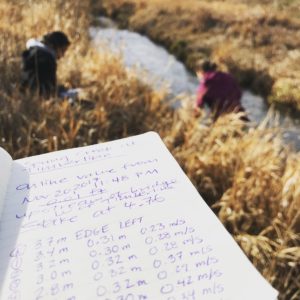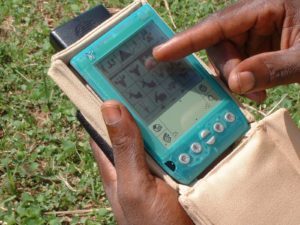
NREL is a hub of Citizen Science development
This article was originally published at the Warner College of Natural Resources.
Greg Newman helps people solve “wicked problems,” the ones that require lots of data and people working together to solve. Now a research scientist in the Natural Resource Ecology Laboratory at Colorado State University, he launched CitSci.org in 2007 as part of his graduate studies to promote more citizen involvement in scientific research.
“Using CitSci.org, people can share, collaborate and network with each other,” he said, not unlike using Facebook or other social media platforms.
Through CitSci.org, volunteer coordinators have created 483 projects around the globe, with nearly 750,000 data points. Among the projects, volunteers are:
- tracking eagle nests across the Front Range in Colorado
- observing the impact of gas development on water resources in Virginia and West Virginia
- gathering data on pika in Colorado and Oregon
- monitoring bird species in Alaska, and
- tracking red seaweed on the South Carolina coast.
Stephanie Kampf, an associate professor in CSU’s Department of Ecosystem Science and Sustainability, is using the site for Stream Tracker, to improve the mapping and monitoring of smaller streams in Colorado that do not flow continuously.

Up to 70 percent of streams around the world flow intermittently, she said. Locally, she estimates that 85 percent of streams in the Cache la Poudre watershed are intermittent. Existing maps are often wrong about either stream type or stream location, and these features can change over time due to land use or climate change.
“Many species rely on intermittent streams, even though they don’t continuously flow,” she said.
Intermittent streams are important for water supply, but they can also create flood hazards. Tracking the flow of the streams can help managers plan for future flood risks.
Wealth of observations
This type of tracking project could be incredibly expensive without the help of citizen scientists. Stream Tracker currently has 64 volunteers and researchers tracking streams in 337 locations in Colorado. To date, the team has logged 4,564 measurements and 2,148 observations.
Volunteers navigate to stream locations in the field using a mobile phone or GPS and collect data using the CitSci.org mobile app or a paper data sheet. They document the condition in the channel of the stream as either flow, standing water, no flow, or note that the channel is obscured from view.
Once they return to an area with Internet access, project members can upload or enter observations directly to the project’s database on CitSci.org. They can also view all the observations made by themselves and others for any Stream Tracker point.
“We can see the flow patterns over time, which is really exciting,” said Kampf. She and her team have already identified what sort of rain conditions can activate a stream.
Stream Tracker has made an effort to educate the community and recruit volunteers at events such as the Poudre RiverFest held in June. “Many people don’t pay attention to intermittent streams or even know about them,” said Kampf. “Now, the community can use simple observations to see these streams in a different way.”
Many flavors
Newman said that there are “many flavors” of citizen science. Some call it community-based monitoring, while others see it as crowdsourcing knowledge.

Whatever it’s called, Newman’s citizen science efforts have gone global. He is working with CyberTracker Conservation, a nonprofit in South Africa that promotes worldwide environmental monitoring, to build an app that would send data directly to CitSci.org.
“Someone in Kruger National Park in South Africa can measure rhino poaching activity, and share that with colleagues at another park,” said Newman.
Through the CyberTracker app — currently in beta test mode — citizen scientists track rhinos, gorillas, and snow leopards using icons of the different animals, rather than written words. There are over 50 dialects in Ethiopia and some communities have no written language at all, Newman explained.
Not all data on CitSci.org projects are publicly available. For some projects, there is an “ask to join” option for permission to view more details.
Newman said some projects, including CyberTracker, appreciate that layer of security. “Poaching is a very sensitive topic, and trackers might not want the whole world to know what they’re seeing in real time, due to safety concerns,” he said.
What’s next? The research scientist said he wants to “elevate the game” of these citizen science projects, and educate scientists about how valuable this type of approach can be for research.
“I want to help them by building web-based tools and apps, and by adding new technologies,” he said. “I also want to help them, from a learning perspective, do better work that’s even more impactful.”
Learn more about the research on CitSci.org through the project’s blog.
The Natural Resource Ecology Laboratory and Department of Ecosystem Science and Sustainability are part of the Warner College of Natural Resources.